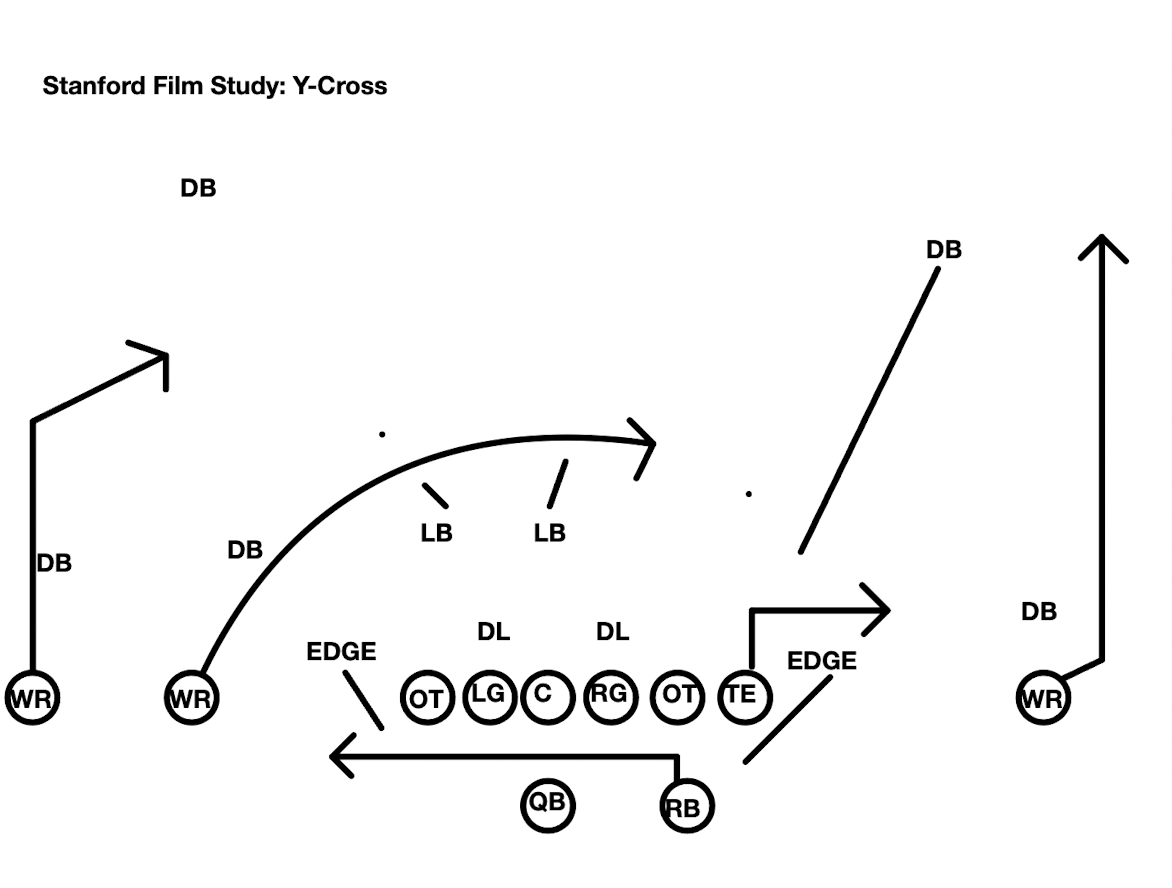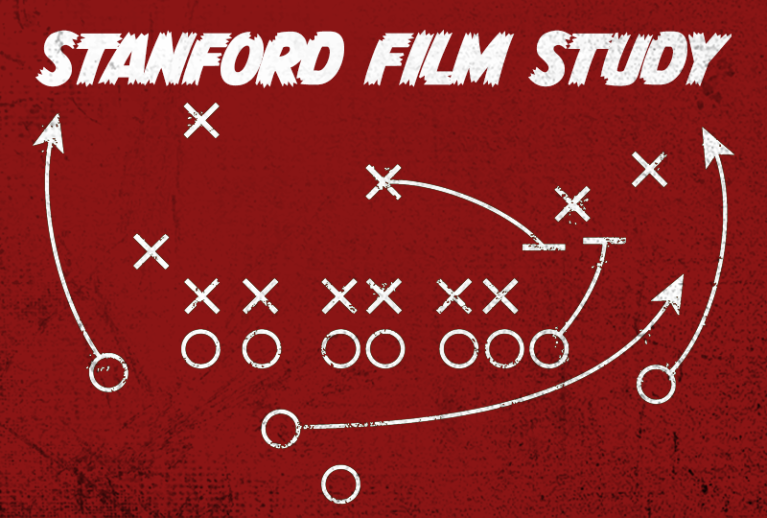This installation of film study will dive into Stanford’s version of the Y-Cross. Some of the most explosive college offenses in the past decade have bludgeoned their opponents with this concept. This includes Lincoln Riley’s offenses at Oklahoma and LSU’s 2019 national championship team.
The concept involves utilizing several high-low reads to put the defenses in a bind. The concept can work well against almost any type of defense given that teams have the right personnel.
How does Y-Cross work?
The Y-Cross concept always has a slot player or in-line tight end running a crossing route over the middle of the field. This crossing route can be either a high or low cross. A high crossing route generally breaks across to a depth of 20 yards while a low cross will break at a depth of around 13 yards. In addition to the crossing route, a post route will start and run towards the same side as the crosser. On the other side, a deep route will be run so that the safeties can’t rotate toward the cross and post. There will usually be short/flat routes on each side to take advantage of the underneath space if the linebackers and cornerbacks drop back.
Below is a play diagram of Stanford running Y-Cross against Washington’s 2-4-5 defense in 2021.

During the play, the boundary receiver runs a deep route so that the strong safety can’t rotate to the weak side to help the play. Tight end Benjamin Yurosek runs an out route underneath toward the boundary side. Meanwhile, wide receiver Elijah Higgins runs a low crosser and the field receiver runs a post route. Former Stanford running back Austin Jones slips to the flat.
The vertical push by Higgins along with the fake pass protection by Jones forces the nickel to run with Higgins for a bit. However, the nickel eventually passes Higgins off to the linebackers and tries covering the flat. Since the flat is open, quarterback Tanner McKee eventually passes the ball to Jones. The nickel is in good position to limit the gain, but he misses the tackle, which allows Jones to scamper for seven yards.
While this ended up being a positive play for the Cardinal, there are ways in which it could’ve yielded even greater returns. First, the strong safety took the underneath route to the boundary side by Yurosek, which means that the deep route to the boundary side was one-on-one. McKee could’ve made an alert call to signal that if the safety comes down he’ll throw the deep ball. This would also work because the weakside safety started the play on the other side of the field.
Perhaps with more starts under his belt and more of his weapons back from injury, McKee will be able to help Stanford execute this pattern to greater success through the remainder of the season.
